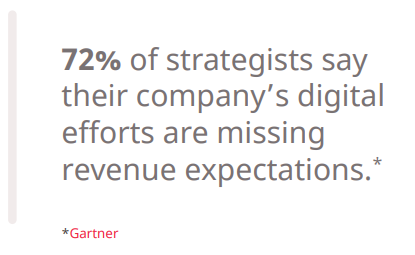Guide to headless CMS & GraphQL | Brightspot
Uncategorized
Introduction
Today’s technical buyers navigate a constantly evolving landscape, where new technologies and methodologies frequently disrupt the status quo. The pressure to stay ahead is intensified by the need for rapid evolution and digital transformation.
How do technical teams contribute to creating these digital-first environments and strategies that keep their organizations competitive?
Technical teams align technology with the business mission, strategy, and processes. They set technical standards, including code, tools, and platforms, considering cross-domain factors, long-term goals, and governance. Their primary goal is to drive transformation towards a future-ready state, building businesses not just for today, but for tomorrow.
Technical teams spearhead technological innovation, enhancing organizational resilience. They constantly strive for optimal experiences and results. This is no small task.
To meet the demands of being digitally agile and transformative, technical teams need a modern architecture that offers flexibility for future transformation. Understanding headless CMS architecture and GraphQL can significantly impact this goal.
This eBook explores the origins of headless CMS and why this architecture appeals to technical teams. We will discuss the pros and cons of different architectures, key considerations before adopting headless CMS, and how GraphQL supports it. Additionally, we’ll highlight the benefits of headless CMS for technical teams and provide guidance on selecting the best CMS for an organization’s unique needs.

The Origin of Headless CMS
Headless CMS applications are gaining popularity—but what exactly is headless, and where did it originate? To understand this, let’s explore the different types of content management systems available today.
Traditional CMS:
A traditional (or coupled) CMS tightly integrates the back end with the front end. Content creation, management, storage, and all associated digital assets are handled on the site’s back end, which also houses website design and customization applications. This back-end system delivers and presents content directly to end users’ devices.
Headless CMS:
Headless CMS is a subset of decoupled architecture. In a headless CMS, there is no fixed front end; instead, the CMS serves as a content-only data source. This allows developers to use their preferred tools and frameworks to control where and how content is displayed.
Decoupled CMS:
In a decoupled CMS, the back end and front end of a website are separated into two distinct systems. One system manages content creation and storage, while the other handles the presentation of this content to users through a chosen interface.
Hybrid CMS:
Hybrid CMS combines elements of both decoupled and headless architectures. This model allows organizations to mix presentation or front-end choices, enabling the delivery of varied experiences across different devices and platforms.
The rise of headless CMS adoption began in 2015 with the development of the public GraphQL CMS specification, which made headless architecture accessible to a broader audience. GraphQL has since become an open standard, significantly contributing to the appeal of headless CMS today.
From an industry perspective, headless CMSs gained traction as businesses sought better solutions to engage customers in personalized ways. Organizations needed to reach existing and prospective customers across multiple channels throughout the buyer journey, requiring the flexibility to do so on their terms. Headless CMS provides an adaptable solution for future-proofing a business’s ability to deliver the best possible experience, regardless of the device.
Today, 71% of customers desire a consistent experience across channels, yet only 29% feel they receive it. These insights highlight the growing need for a modern CMS solution that allows organizations to engage people where they are and in the ways they expect—not just today, but also as new channels and technologies emerge.
Discover how headless CMS and GraphQL can revolutionize your content strategy. Dive into our comprehensive guide to learn the benefits, best practices, and how to get started. Continue Reading & Download the Guide
Table of Contents of “Guide to headless CMS & GraphQL”:
- The Origin of Headless CMS
- Considerations for Choosing Headless Architecture
- Benefits of Headless for Technical Teams
- Understanding GraphQL
- Getting Started: The Technical Buyer’s Checklist
Number of Pages:
- 17 pages
Pricing:
- Free





